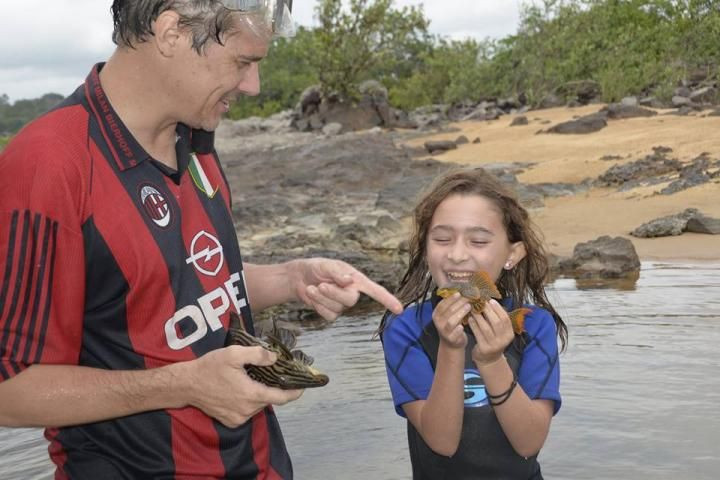Blind Catfish From Amazon Is Newly A Discovered Species

A newly discovered catfish species without eyes and almost colorless skin is officially the namesake of a little girl who likes to follow her dad as he works in the field.
Scientist Mark Sabaj and local fisherman in South America pulled the Xyliphius sofiae out of the waters of the Amazon River before his daughter Sofia, now 7, was born, according to a statement from Drexel University. It is a unique fish in its “complete loss of its eyes and its pale — almost extreme lack of — pigmentation,” Sabaj said in the statement. He himself has five species, three of which are catfish, named for him. “Most catfishes with similar features inhabit underground aquifers and other cave environments” that are dark, but this one was found in the river near Iquitos, Peru.
The sediment in the Amazon can stop light from going too deep into the water, however. And the catfish doesn’t need eyes; its long whiskers called barbels help it feel around in the dark.
According to a study in Copeia, researchers were able to study the new species X. sofiae in detail with a high-resolution and non-invasive CT scan, which takes numerous X-ray images and reconstructs them into a 3D image.
Read: This Hideous Fish Is Covered In Slime And Feeds Like A Scary Alien
Drexel University, where Sabaj is interim curator of Ichthyology, a.k.a. fish zoology, in the Academy of Natural Sciences, explained that the catfish is small — only about an inch and a half from its snout to its tail — compared to the others in its group of “banjo catfish” from South America.
Encyclopaedia Britannica explains that they are called banjo catfish because this subtype consists of “slim fishes with rough, flattened heads and from above somewhat resemble banjos.”
Despite having a lot of detail about its physical characteristics, scientists still have a lot to learn about the X. sofiae catfish, like what it eats.

“Perhaps most the most interesting aspect of the X. sofiae is its habitat, the dark depths of the Amazon channel,” Sabaj said. “Until recently, such habitats remained poorly explored and the diversity of its denizens was poorly documented.”
See also:
© Copyright IBTimes 2024. All rights reserved.




















